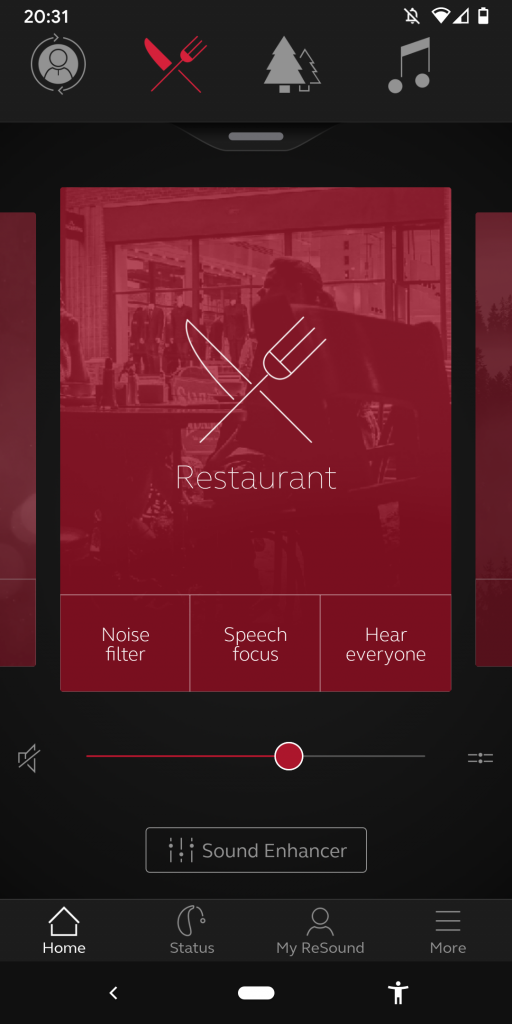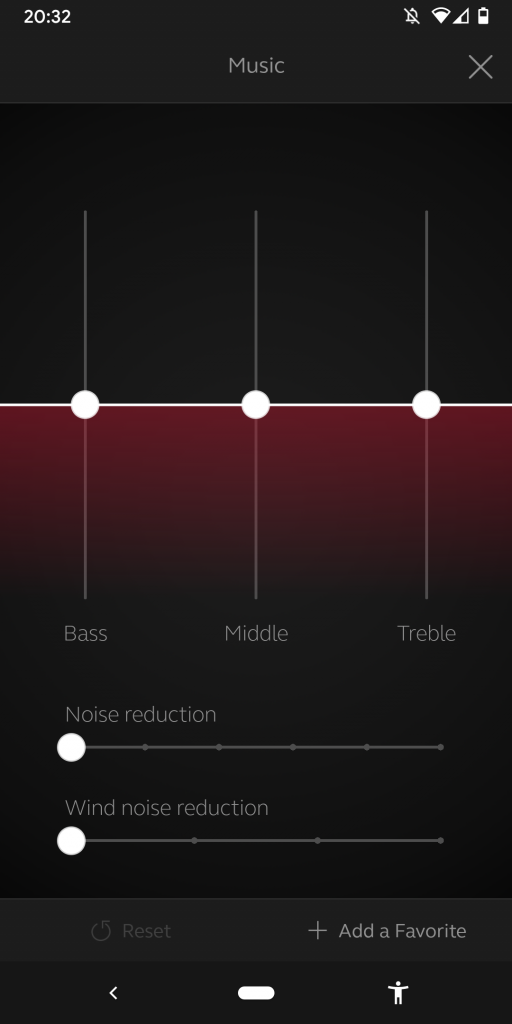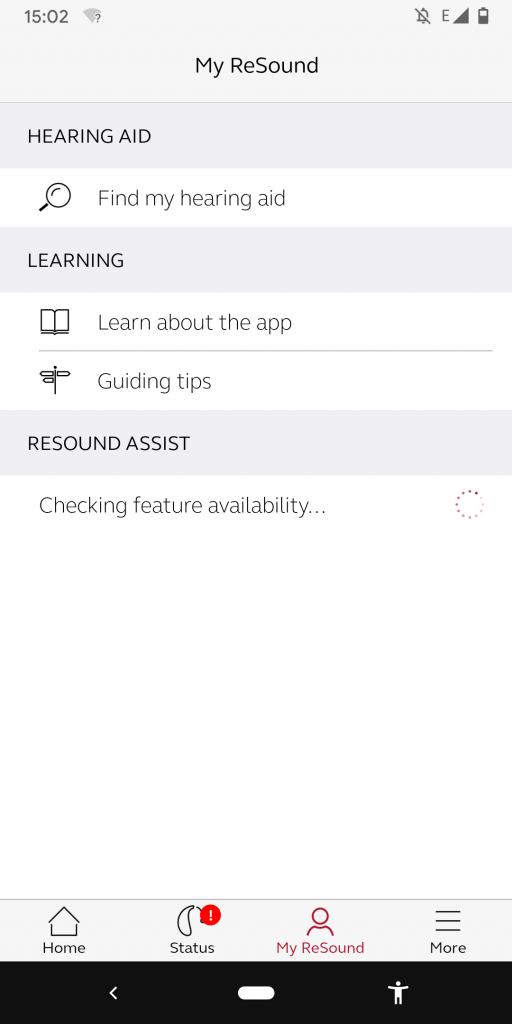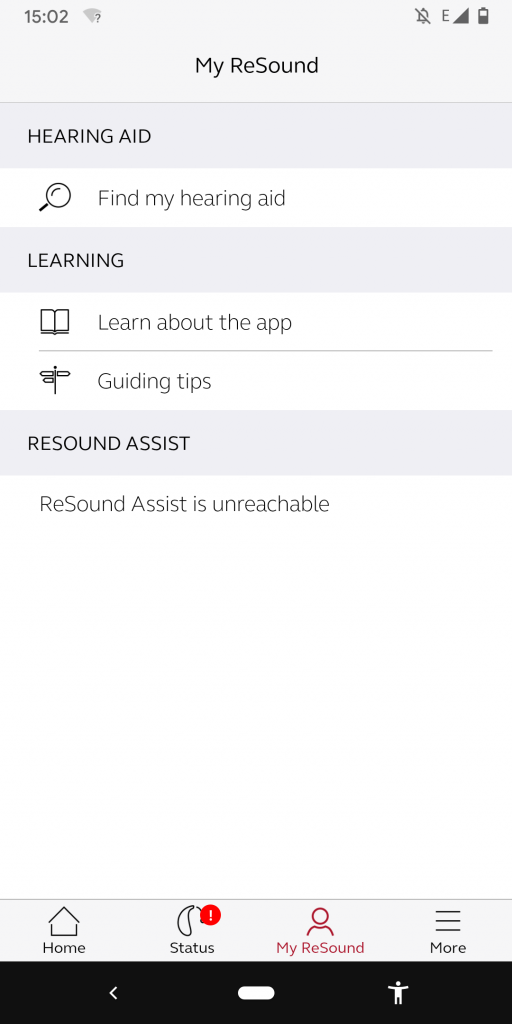I recently had the pleasure of testing ReSound’s hearing aids LiNX Quattro. These are one of the few hearing aids on the European market that offer streaming via built-in Bluetooth and support Android phones. Built-in here means that no physical adapter is needed to connect the hearing aids to the phone. Here’s my review.
I had been observing ReSound for a while now. They are the ‘cool kids’ among the hearing aid manufacturers. The brand appears innovative, modern and welcoming the tech-loving customers. Unfortunately for a long time ReSound focused on IPhones, their slogan being “Made for IPhone”, when it came to Bluetooth connectivity. As I am living on the Android side, I had to be patient.
Last year they announced the offering of built-in Bluetooth streaming also for Android devices. That got me curious, as I was about to chose my next set of hearing aids. One of my biggest criterion for my purchase decision was that I did not want to carry around Bluetooth adapters anymore. Hence I tested the LiNX Quattro (most premium version) for about two weeks.
The Signal Processing
My number one criterion for choosing hearing aids is the signal processing. I want the best speech clarity when having conversations as well as the most beautiful sound when listening to music.
I must say I was totally happy with that when wearing the Quattros. Speech understanding was great, totally comparable to other brands in this league. Music was delightful in the respective program. Really, the signal processing totally met my bar.
In noisy environments I could switch to the “Restaurant” mode with “Speech Focus”, which worked exceptionally well. It led to a few situations where I was having an advantage over my hearing friends. I was sitting in a loud pizza place with them and I was totally relaxed listening to the conversation when I suddenly noticed that in fact they were starting to have trouble to understand each other. Made my day.
The App
As many hearing aid manufacturers do offer these days, the Quattros came with an App to control the hearing aids. Even if some hearing aids don’t support Bluetooth streaming yet, most of them have apps to control the hearing aids like a remote control. The communication between the phone and the hearing aids is done via a part of the Bluetooth protocol as well. I had looked at the apps of various vendors and also here, ReSound could score some points.
The app was actually quite nicely designed, both in terms of usability as well as visual appeal.
For example my favorite “Restaurant” mode looked like this:

Most programs also gave me as a user a couple of options, like a simple equalizer and levers for noise reduction:

So, overall I was happy with the app. On a side-note however, I do think the bar isn’t very high here. Most hearing aid manufacturers are rather new to the app business and frankly you can see that in the apps. I certainly expect some more innovation in terms of user interface design and functionality of the apps in the next years.
The Bluetooth Streaming
Coming to the most interesting part, the Bluetooth streaming. First of all, let me quickly summarize the market here. The Quattros use Bluetooth 5.0 and the Low Energy protocol as one of the first on the market. End of 2019 they were the only ones with that on the European market at all. In the US, the competition is allegedly the “Beltone Amaze”. Unfortunately, I did not have the opportunity to test those (yet?). However, on the European market, there is one viable alternative: Phonak offers with their “Audéo Marvel” a hearing aid with built-in Bluetooth as well. However, the Marvels implement the 4.2 Bluetooth spec which does not include an official spec for hearing aid integration. However, I tested those as well and the report will follow in this blog.
I tested the Quattros with a Pixel 3 and Android 10, which perfectly fit their compatibility matrix. When I got the hearing aids, I was told I need to install the app and pair them with the hearing aids. Afterwards I could use the app then to control the hearing aids. However, the streaming support was not available out of the box. I was told by the ReSound customer support that I need to wait a day and then the app will update itself and then it will work magically.
So I spent the next day waiting for an update:

However, all I got was this and other disappointing messages.

I waited yet another day. I contacted my audiologist who contacted the ReSound customer support again and they told me to keep trying. Days went by. I got an extension to test the Quattros not one but two weeks, but after a week the feature still wasn’t there. The answer of the customer support was that I would need to return the hearing aids and sent them in so that they can make a firmware update. However, that was after a week. There is no second chance for a first impression.
Apart from these hiccups in usability, there was another aspect that I realized is a no-go for my purchase decision. According to the ReSound customer support, you can only connect the hearing aids for streaming on devices that have the ReSound app, e.g. phones or tablets. This means that you cannot connect them to any other devices to stream audio. I think that is really a big restriction.
That means I have no options to connect it to a laptop (even if I would not have rare OS like Linux). Another option I frequently use is a standalone Bluetooth Adapter such as this one. I connect this one via a cable with devices that cannot transmit Bluetooth but that emit sound such as an old car stereo. My expectation was that if the hearing aids are advertised with “built-in Bluetooth” that I can pretty much freely use my hearing aids just like any other Bluetooth headset. Unfortunately, as it turns out, my expectations were too high.
T-Coil
Although it is not that hip anymore, I actually use the T-coil quite frequently. At work, we have some meeting rooms equipped with induction loops connected to the video conferencing systems. Besides once in a while I find a theatre or othe venue that has one installed.
Unfortunately it seems to be so out of fashion, that Resound did not built T-Coils into their Quattros. You can buy an additional adapter, the micro mic, which has the T-Coil and other features. However, one of my goals was to get rid of Bluetooth adapters. If I now have to replace the Bluetooth adapter with an adapter for the T-Coil I haven’t really won that much.
Actually already in this two weeks testing phase I regularly forgot the thing and sat in those meeting rooms not being able to use the induction loop.
Summary
My summary about the Quattros is this:
- They are solid hearing aids in the premium league. Great signal processing, both for speech and music. The restaurant mode is a plus for noisy environments.
- The app is okay and usable compared to what is on the market.
- It was not possible to test the Bluetooth streaming for me as the required App update never came in the time frame that I had access to the devices.
- By design, it is only possible to stream with devices that have a ReSound app. It is not possible to use the hearing aids as a general Bluetooth headset on any devices that can pair with Bluetooth headsets, such as laptops or Bluetooth transmitters.
- No built-in T-Coil available, only with adapter.
Overall I had high hopes for these hearing aids. ReSound as a company is an interesting one, in particular for tech-loving people like me. I had waited a long time for them to become “Made for Android”. However, as I could not even test the streaming, I am rather disappointed. That combined with the realization that streaming is only possible where a ReSound app is available made it easy for me to not buy the Quattros. I’ll give ReSound a few more years and try again then.

Be First to Comment